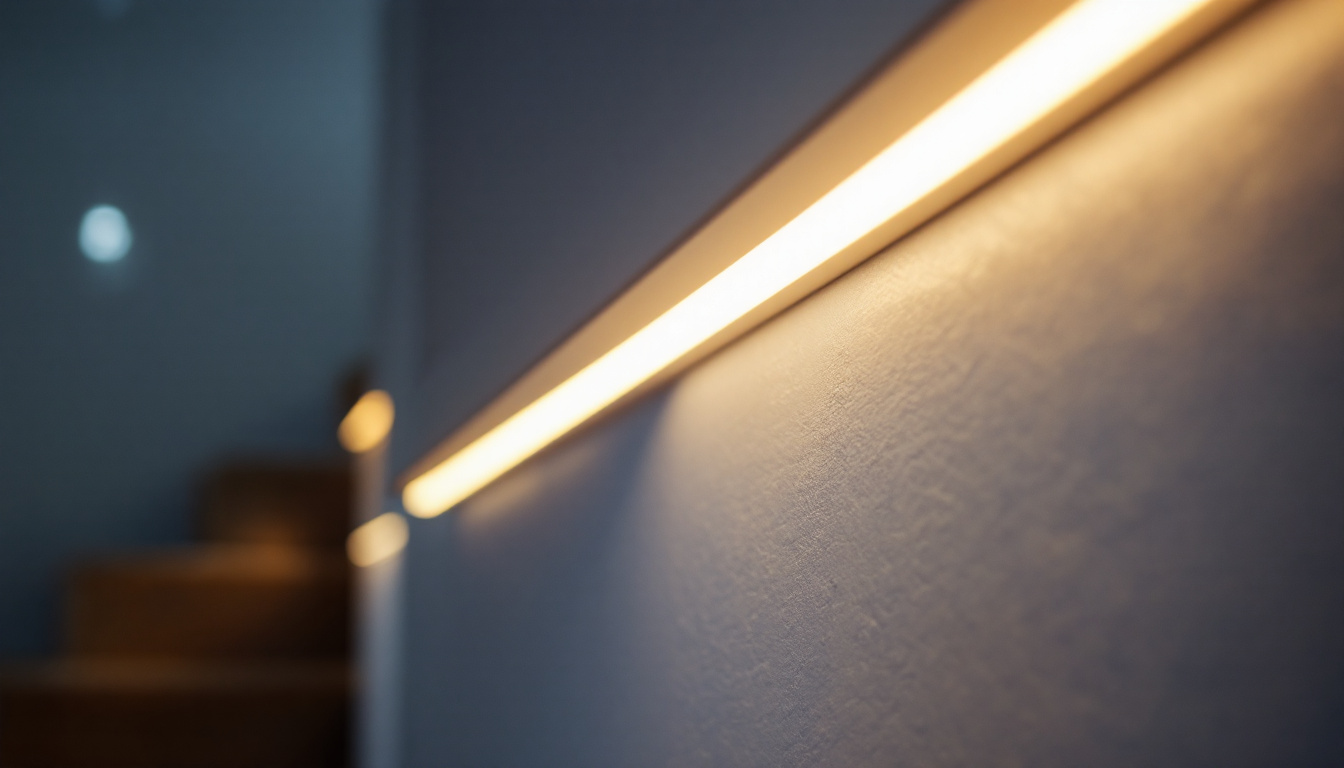
Despite the surge in LED and other energy-efficient lighting technologies, T12 fluorescent bulbs remain a common fixture in many commercial and industrial settings. Their widespread use is due to existing infrastructure, cost considerations, and specific lighting needs that some facilities still rely on. However, lighting contractors frequently encounter challenges when working with these older bulbs, from compatibility issues to energy inefficiency.
For contractors, the key lies in balancing client expectations, regulatory requirements, and practical constraints. Knowing the ins and outs of T12 bulbs, their limitations, and the best strategies to manage or replace them is essential for delivering effective lighting solutions.
One of the primary reasons T12 bulbs continue to be utilized is their availability and the familiarity that many facility managers have with them. T12 fluorescent fixtures are often integrated into the architecture of older buildings, making retrofitting to newer technologies a significant investment in both time and resources. Additionally, the initial cost of replacing T12 bulbs with LED alternatives can be a deterrent, especially for businesses operating on tight budgets. The transition to energy-efficient lighting, while beneficial in the long run, requires careful planning and consideration of the financial implications for the organization.
Moreover, T12 fluorescent bulbs provide a specific quality of light that some industries prefer for their operations. For instance, in manufacturing and assembly environments, the diffuse light produced by T12s can help reduce shadows and glare, improving visibility and safety for workers. This characteristic can be crucial in settings where precision is paramount, such as in laboratories or production lines. As a result, contractors must not only focus on the energy savings associated with newer technologies but also consider the unique lighting requirements of each space to ensure that any upgrades do not compromise functionality.
T12 bulbs are notorious for their relatively high energy consumption compared to modern alternatives like T8 or LED tubes. This inefficiency directly translates into higher electricity bills for clients, which often becomes a sticking point during project discussions. Many facility managers are aware of this but hesitate to upgrade due to upfront costs or disruption concerns.
Contractors must be prepared to address these concerns by clearly communicating the long-term savings and return on investment that come with energy-efficient upgrades. Demonstrating potential reductions in energy use—sometimes up to 40% when switching from T12 to T8 or LED—can help sway decision-makers. Additionally, it’s crucial to highlight the environmental benefits of these upgrades, such as reduced carbon footprints and compliance with sustainability initiatives, which are increasingly important to businesses aiming to enhance their corporate social responsibility profiles.
T12 bulbs typically require magnetic ballasts, which are less efficient and more prone to failure than electronic ballasts used with newer bulbs. When replacing T12 bulbs, contractors often face challenges ensuring that new bulbs are compatible with existing ballasts or deciding whether to replace the ballasts altogether.
Retrofitting can be complicated. For instance, installing LED tubes designed for electronic ballasts into fixtures with magnetic ballasts can cause flickering or premature failure. Lighting contractors need to carefully evaluate each installation site, sometimes conducting ballast testing or recommending full fixture replacements to avoid ongoing maintenance headaches. Moreover, understanding the specific needs of the space—such as the required lumen output or color temperature—can guide contractors in selecting the most appropriate lighting solutions for their clients, ensuring not only compatibility but also optimal performance and satisfaction.
Many regions have phased out or restricted the use of T12 bulbs due to their inefficiency and mercury content. While some facilities still use them, lighting contractors must navigate local regulations to ensure compliance. This can include proper disposal of old bulbs and ballasts, as well as advising clients on mandated upgrades.
Failing to comply with regulations can lead to fines or environmental liability, so contractors should stay informed about current laws and help clients plan for smooth transitions away from T12 technology. This includes providing guidance on recycling programs and sustainable disposal methods, which not only mitigate legal risks but also align with clients’ sustainability goals. Additionally, contractors can leverage these opportunities to educate clients about the benefits of energy-efficient lighting, potentially opening doors for future projects and fostering long-term relationships built on trust and expertise.
Before recommending solutions, lighting contractors should perform detailed assessments of existing lighting systems. This includes checking the condition of ballasts, fixture compatibility, wiring, and the overall lighting quality. Understanding the client’s usage patterns and budget constraints is equally important.
Such assessments allow for tailored recommendations-whether that means replacing bulbs, upgrading ballasts, or installing entirely new fixtures. Accurate data helps contractors present clear options and cost-benefit analyses to clients.
Not every client can afford or wants to replace an entire lighting system at once. Offering phased upgrades can ease financial and operational burdens. For example, replacing T12 bulbs with more efficient T8 bulbs and electronic ballasts first can significantly improve energy consumption without a full overhaul.
Later phases might include switching to LED tubes or new fixture installations. This staged approach allows clients to spread costs over time while progressively improving lighting quality and efficiency.
LED retrofit tubes compatible with T12 fixtures have become increasingly available. These products often require minimal rewiring and can operate with existing magnetic ballasts or bypass them entirely. Using these tubes can reduce energy consumption by 50% or more and extend lamp life dramatically.
Contractors should carefully select retrofit products that meet safety standards and ensure compatibility with the client’s specific fixtures. Providing warranties and demonstrating product reliability can build client confidence in these solutions.
Clients sometimes focus on upfront costs, overlooking the long-term advantages of upgrading from T12 bulbs. Lighting contractors play a crucial role in educating clients about lower maintenance costs, reduced energy bills, improved lighting quality, and environmental benefits.
Providing case studies, energy savings calculations, and even arranging demonstrations can make a compelling case. When clients understand the full picture, they are more likely to invest in sustainable lighting solutions.
Magnetic ballasts used with T12 bulbs have a limited lifespan and can cause flickering, buzzing, or reduced light output as they age. Regular inspections help identify failing ballasts before they impact lighting quality or cause fixture damage.
Replacing ballasts with electronic versions can improve efficiency and reliability, but contractors must ensure compatibility with existing bulbs or retrofit tubes. Keeping a stock of common ballast types can speed up maintenance work and reduce downtime.
Flickering is a common complaint with T12 lighting, often caused by ballast problems, loose connections, or bulb wear. Troubleshooting should start with checking the ballast condition and socket contacts. Sometimes, simply reseating the bulb or cleaning contacts can resolve issues.
If problems persist, replacing the ballast or upgrading to LED retrofit tubes may be necessary. Proper diagnosis prevents unnecessary replacements and helps maintain client satisfaction.
T12 bulbs contain mercury, making proper disposal critical. Lighting contractors should ensure that all removed bulbs and ballasts are handled according to environmental regulations. Partnering with certified recycling programs protects clients from liability and supports sustainability goals.
Providing clients with clear information on disposal procedures also demonstrates professionalism and commitment to responsible practices.
While incremental upgrades are practical, the ultimate goal for many facilities is a full LED lighting system. LEDs offer superior energy efficiency, longer lifespans, and better light quality. Contractors should work with clients to develop long-term plans that include budget considerations, installation timelines, and expected benefits.
Integrating smart lighting controls and sensors can further enhance efficiency and user experience, adding value beyond basic bulb replacement.
Lighting technology continues to evolve rapidly. Contractors who stay updated on new products, regulatory changes, and best practices can better serve clients and maintain a competitive edge. Attending trade shows, participating in training, and networking with manufacturers are effective ways to stay current.
Understanding emerging trends such as tunable white lighting, IoT integration, and advanced controls will prepare contractors to offer innovative solutions that meet future client needs.
Clients value contractors who communicate clearly and provide honest assessments. Explaining the pros and cons of T12 bulbs, potential upgrade paths, and realistic expectations builds trust. Offering detailed proposals with transparent pricing and timelines helps clients make informed decisions.
Reliable follow-up, maintenance support, and responsiveness to client concerns further strengthen professional relationships and lead to repeat business.
T12 fluorescent bulbs present a unique set of challenges for lighting contractors, from energy inefficiency to compatibility and regulatory compliance. However, these challenges also offer opportunities to demonstrate expertise, guide clients toward better solutions, and contribute to sustainable lighting practices.
By conducting thorough assessments, offering phased upgrades, leveraging LED retrofit technologies, and educating clients on long-term benefits, contractors can successfully navigate the complexities of T12 lighting systems. Staying proactive with maintenance and disposal, while planning for future-ready lighting, positions contractors as trusted advisors in a competitive market.
Ultimately, overcoming the hurdles associated with T12 bulbs is about combining technical knowledge with clear communication and strategic planning-skills every lighting contractor can master to deliver value and build lasting client partnerships.
Ready to tackle the challenges of T12 fluorescent bulbs and elevate your lighting projects? Choose LumenWholesale for your lighting needs and benefit from our commitment to quality, affordability, and convenience. Our spec-grade lighting products are designed to meet the highest industry standards, ensuring you deliver exceptional results to your clients. With unbeatable wholesale prices and the convenience of free shipping on bulk orders, you can trust us to provide the best value without any hidden fees. Don’t compromise on quality or cost—visit LumenWholesale today and experience the difference that true wholesale pricing and premium products can make.

Discover essential tips and strategies for lighting contractors to excel in installing and maintaining residential lamp posts.

Discover the frequent pitfalls lighting contractors face with recessed LED strip lighting installations.

Illuminate your construction projects with precision using our essential checklist for lighting professionals.

Discover innovative strategies to future-proof your garage lighting projects with cutting-edge lamp technologies.